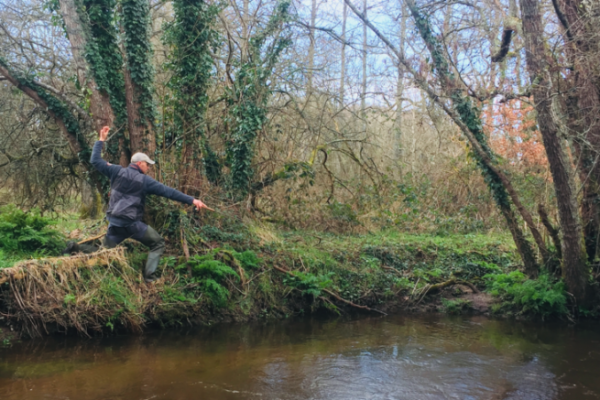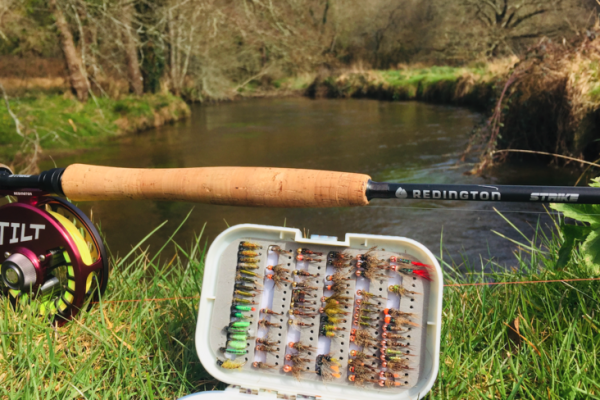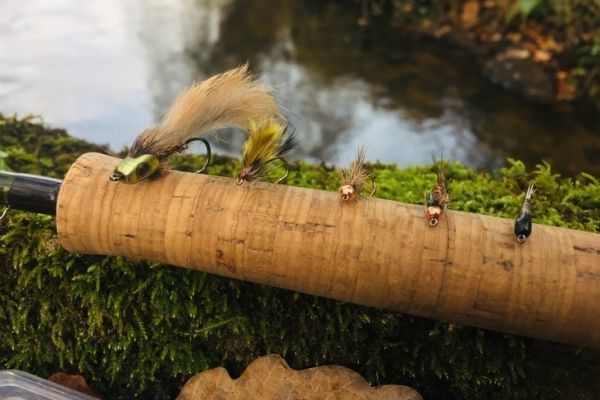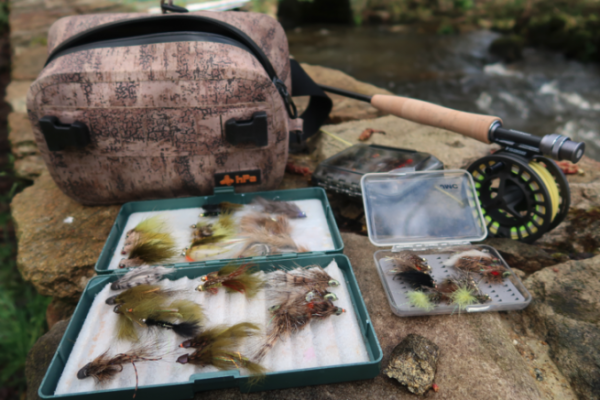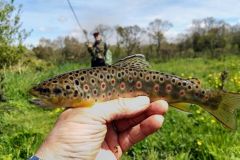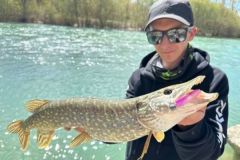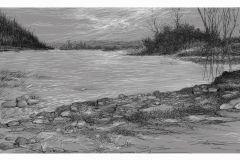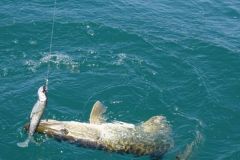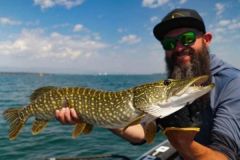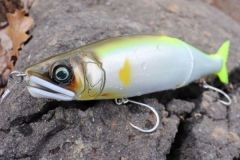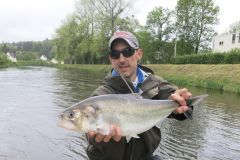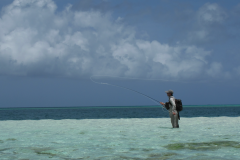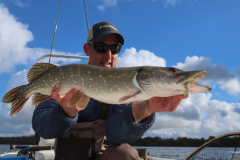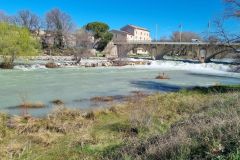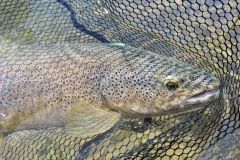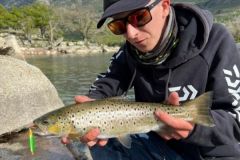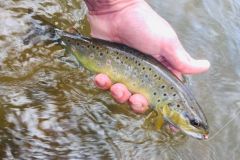Fishing close to the bottom early in the day
Of course, the first hours of the day are often more complicated due to the cold waters at the start of the season, and the fish are often lethargic. There's no point getting up too early if you're fly-fishing.
However, if the fish are already a little active, it is possible to catch a few trout in the morning.
The two fishing techniques that really allow you to fish close to the bottom are :
- streamer fishing
- wire nymph fishing
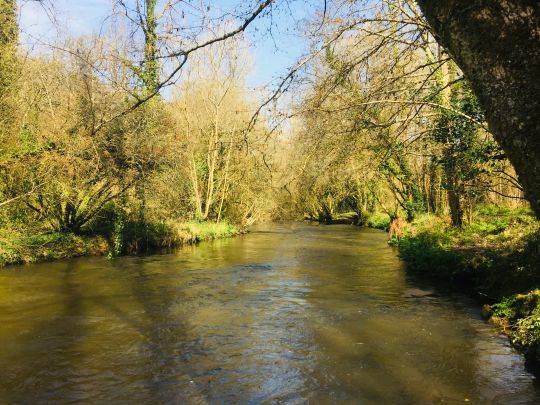
Streamer fishing allows you to offer trout a big bite when they're back on their feet after the winter break.
A streamer imitating a minnow, sculpin or any other small river fish can be used at the start of the season, and especially on opening day, to hit some nice trout if you manage to fish gently and close to the bottom.
To do this, you need to look for suitable areas (baited areas, slow currents, edges), and often use a floating line with a sinking tip or a floating line on which you add polyleaders of different densities to present your fly close to the bottom. Insist on good positions and try several approaches. The important thing is to cast well, neither too fast nor too much off the bottom. Animations should be minimalist and you should accompany your line, using replacements or mendings to slow your drift and pass close to trout spots
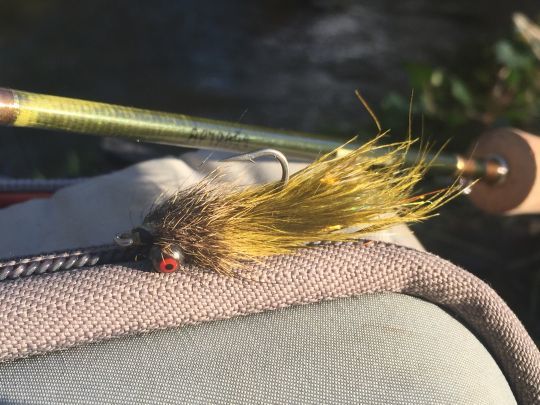
Line nymph fishing (NAF) is becoming increasingly popular with modern anglers.
It, too, enables you to fish well from the start of the season by offering well weighted nymphs, thanks to tungsten balls, to pass flush with the bottom. In fact, it's often a good idea to over-weight your flies in cold water to slow drift, or even bounce your nymph on the bottom. Unlike streamers, nymphs will pass very slowly, close to caches and trout stations. If they have their noses out the door, you'll be able to decide on several on the big day. You'll need to find the right weight for each "shot" and the colors that will appeal to the trout. Pheasant tails and hare's ears with a small orange tag on the tail or behind the ball often yield more hits.
Fishing between two waters or on the surface at the hottest times of day
As air and water temperatures rise, trout become a little more active and are able to move through the water column.
Drowned fishing can be very effective if aquatic insects start to hatch and bring out the trout. Even if the water is still cold, the trout will still feed if the opportunity arises.
With a streamer, it's more difficult to fish as close to the bottom as with a drowned fly, but with a string of 2 or 3 flies, and the use of polyleaders once again, it's possible to fish between two waters, close enough to the fish.
The advantage of the drowned fly is that you can offer several flies at different stages and in different colors, and find what trout like.
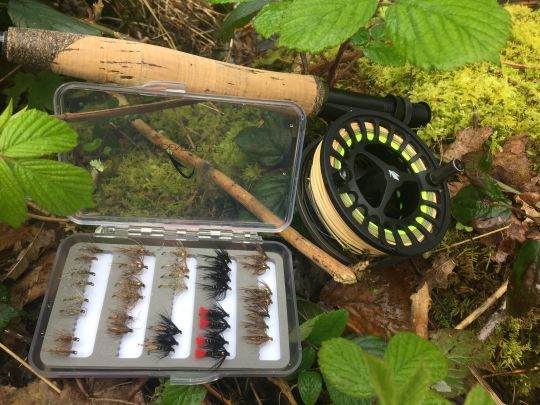
If insects hatch in sufficient quantities, trout will soon rise to the surface, even very early in the season, especially on smooth stretches or small, slow currents. Give preference to the upstream or headwater parts of your streams, as the water warms up faster there and aquatic life starts earlier.
On every river in France, certain insects will rise to the surface and attract trout. So you need to know your areas well, and above all, be on the water at the hottest times and pay close attention. If nothing happens, it's sometimes possible to catch a few fish on the water.
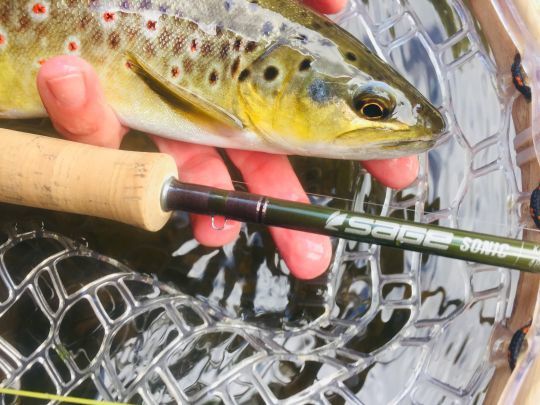
Adaptation and choice of fishing sectors
By juggling these four techniques, it's possible to adapt and find the fishing of the moment.
I'd therefore advise you to start with a streamer or line nymph, depending on your preferences and water conditions.
Then, if you're hitting fish with NAF, especially on the stem nymph, it may be time to try drowned! On the other hand, if you don't get many hits, and only on the bottom nymph, it's because the trout are reluctant to go up into the water.
If you see insects on the water or in the air. Try a dry fly, because sometimes trout can surprise you.
Some regions of France have very good hatches of baetis, while others have March Browns which can produce some very fine fish. If this isn't the case for you, just be patient - it's coming soon!


